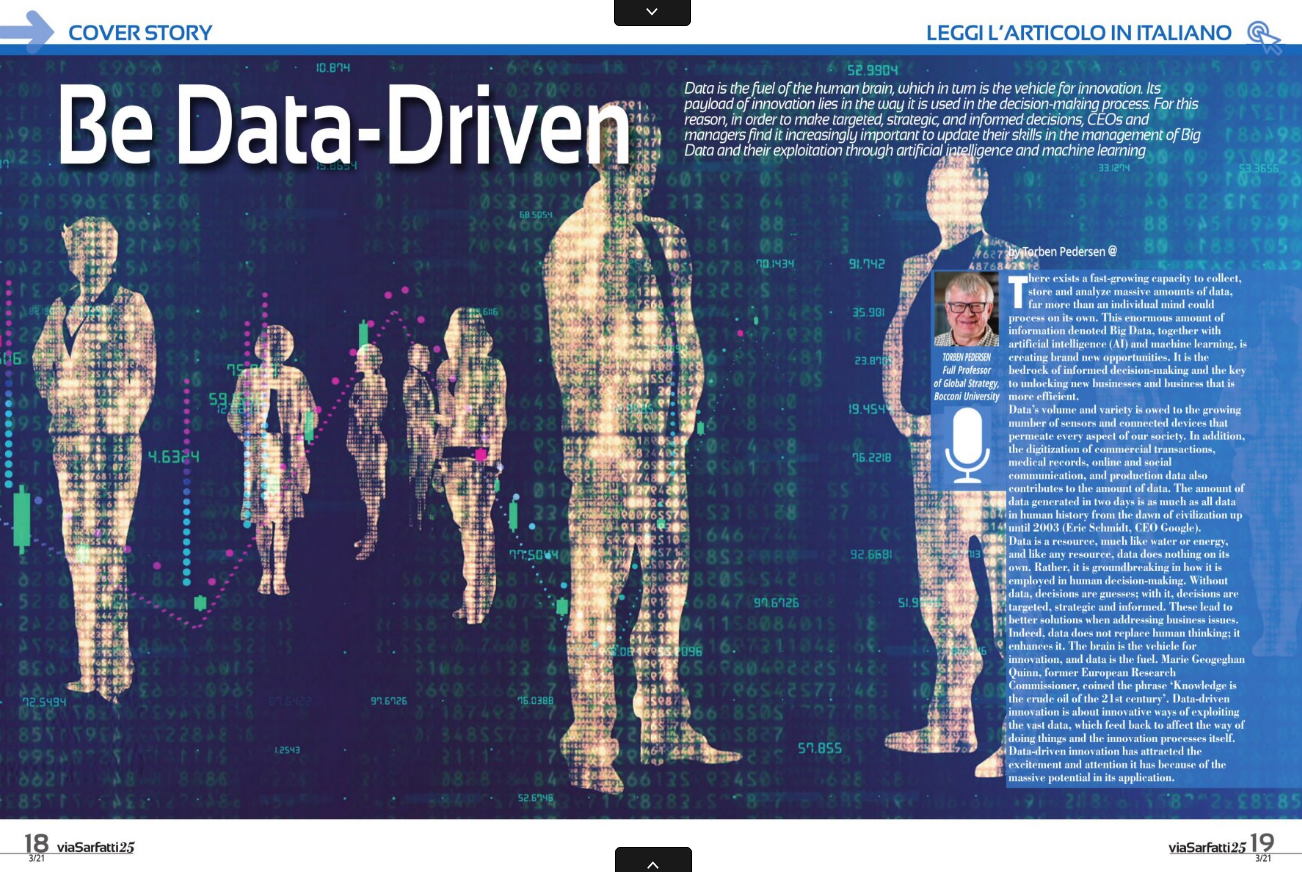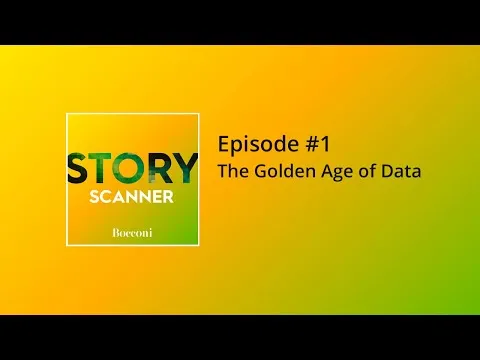
Be Data Driven
There exists a fast-growing capacity to collect, store and analyze massive amounts of data, far more than an individual mind could process on its own. This enormous amount of information denoted Big Data, together with artificial intelligence (AI) and machine learning, is creating brand new opportunities. It is the bedrock of informed decision-making and the key to unlocking new businesses and business that is more efficient.
Data's volume and variety is owed to the growing number of sensors and connected devices that permeate every aspect of our society. In addition, the digitization of commercial transactions, medical records, online and social communication, and production data also contributes to the amount of data. The amount of data generated in two days is as much as all data in human history from the dawn of civilization up until 2003 (Eric Schmidt, CEO Google).
Data is a resource, much like water or energy, and like any resource, data does nothing on its own. Rather, it is groundbreaking in how it is employed in human decision-making. Without data, decisions are guesses; with it, decisions are targeted, strategic and informed. These lead to better solutions when addressing business issues. Indeed, data does not replace human thinking; it enhances it. The brain is the vehicle for innovation, and data is the fuel. Marie Geogeghan Quinn, former European Research Commissioner, coined the phrase 'Knowledge is the crude oil of the 21st century'. Data-driven innovation is about innovative ways of exploiting the vast data, which feed back to affect the way of doing things and the innovation processes itself. Data-driven innovation has attracted the excitement and attention it has because of the massive potential in its application.
'The Golden Age of Data' is the first episode of the new Story Scanner podcast, with further insight and analysis on the topics headlining viaSarfatti25 magazine. In this episode we discuss Big Data and Data-Driven Innovation with professors Torben Pedersen, Gaia Rubera and Gabriele Troilo.
The examples of using Big Data in combination with AI/machine learning in different businesses are manifold. A Telecom company use it for predicting churn of customers, where they through machine learning become better and better in predicting which customers might terminate their subscription and with this information, they can offer customers that are more likely to churn special attention and offers before it happens. A manufacturing company have combined all the data created in the various phases of the production process and created a digital twin (a virtual representation) of the whole production process that receives real-time data. This allows to better monitor the process, testing changes digitally before they conduct the changes in physical production, and most importantly to use AI to predict costly bottlenecks and re-loops. A company making large wind turbines has added competences on Blockchains as it is crucial for their future. The company approached a consulting company using Big Data and AI to search all over the world for this competence. It turns out that the ideal partner was a small innovative company in Chile that the wind turbine company never would have found if it were not for the use of Big Data and AI.
These companies were able to use data-driven innovation successfully because they have made a change in their mind-set. Instead of doing things the usual way and conducting inward-looking innovation, they have opened their eyes to a world of external inputs and acknowledged the opportunities that lie in applying Big Data and AI for better prediction and decision-making. Companies are making better use of their own data sources from the internal processes or from the products ("Internet of Things"). This obviously goes hand in hand with the companies upgrading of their own competences in handling Big Data and striking new gold through AI/machine learning.
Continue reading here the cover story 
The Golden Age of Data | Podcast #1
